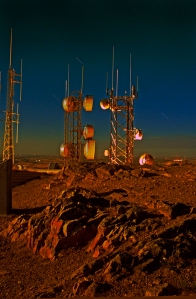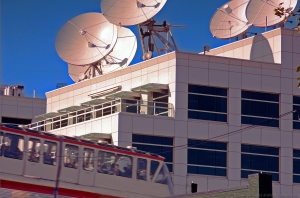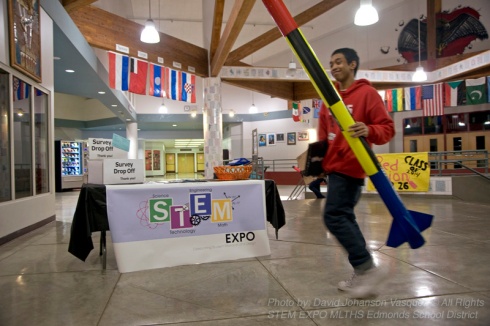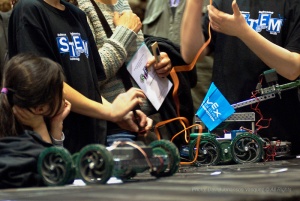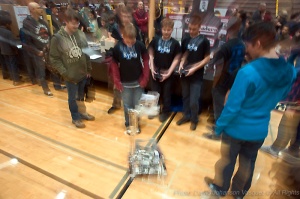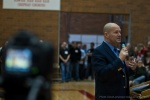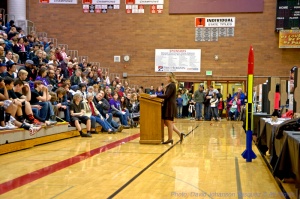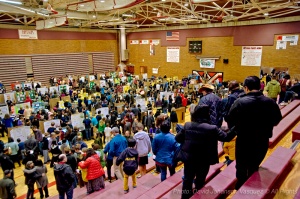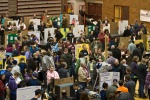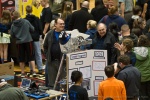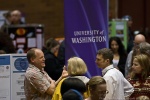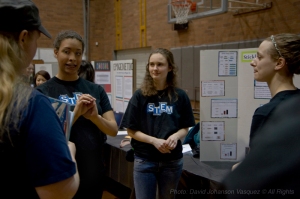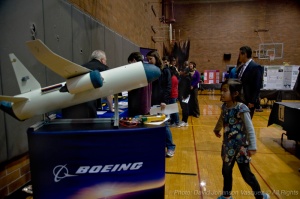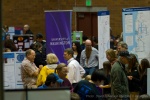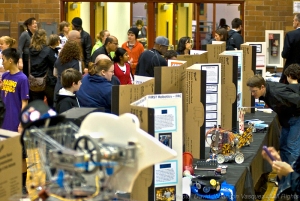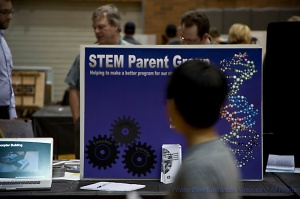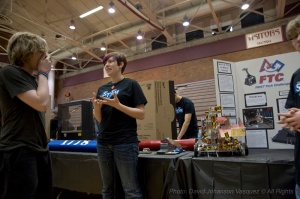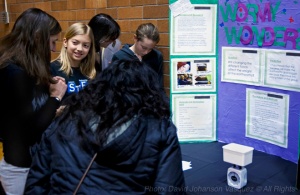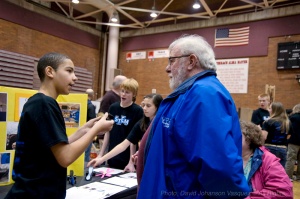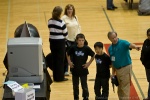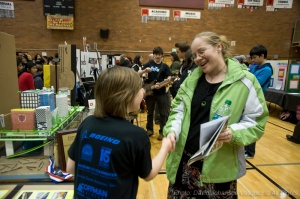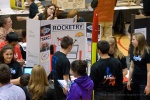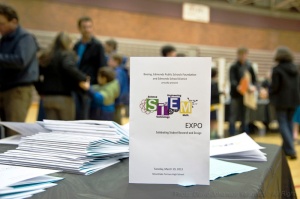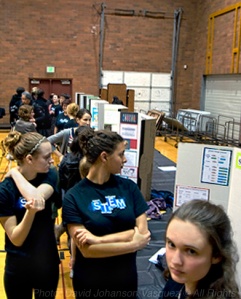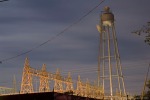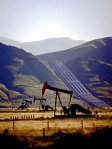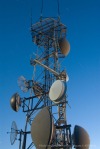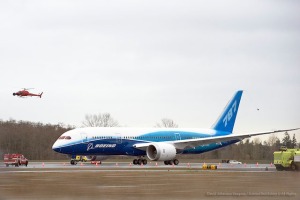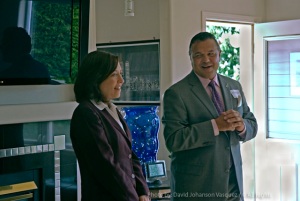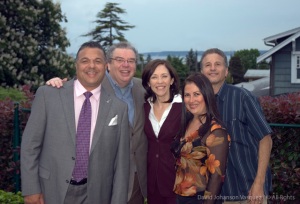(On the left horizon, hydrocarbons are being released into the air, blemishes an otherwise clear arctic day.)
Multimedia eLearning by: David A. Johanson © All Rights
All Roads Lead to Nowhere
Early in my career as a photographer I received assignments which took me above the Arctic Circle. Construction companies and architects working for oil companies in Alaska’s North Slope hired me to photograph their on going developments. At that time the Prudhoe Bay oil field’s production had peaked due to years of sustained extraction. A new oil field near the Kurparuk River, west of Prudhoe Bay was the site I was sent to. The Kuparuk oil field is the second largest oil field in North America by area, and traveling by aircraft was the way I moved from site to site.
Roads and construction sites above the arctic circle, rely on heaps of gravel placed over the tundra’s surface to prevent them from sinking into the earth when the ground thaws. Traveling less than 100 feet off the tundra, at 150 miles per hour, the pilot of the Hughes 500D helicopter races to horizon. The orange shelters at the edge of the road, is our intended destination. These metallic enclosures are used to pump hot steam down-into the wells, for recovering a thick slurry of oil, locked deep below the frozen tundra.

Alaska, the Last Frontier
Flying above an older oil facility, it can clearly be seen — the years of oil production have left Rorschach-like-ink-blots, splattered on the surrounding tundra. I have not been to the oil fields for many years, but I was told at the time — ‘oil companies were trying to cleaning up their act, while leaving a smaller footprint.’ I pray what I heard was true, but as we know — accidents both large and small continue to happen.
On a clear day while flying above vast stretches of tundra, we spotted a small monument, which marked where Will Rogers and Wiley Post had been killed in a plane crash. I spotted dozens of randomly placed metallic cylinders near the site. My bush pilot brought the airplane down for a closer look and cynically said, those are abandoned, empty 50 gallon oil barrels… known as —“Alaska’s state flower.
An old barn in the shadow of Anacortes oil refinery.
There’s something charming about old barns as they weather over the years. This one with its organic wood earth tones, is contrasted against the metallic cylinders of an oil refinery in Anacortes, about 70 miles north of Seattle, on the edge of Puget Sound. On April 2, 2010 five workers were killed at this oil refinery as an explosion and fire ripped through part of the refinery.
EARTH Day seems to have more meaning as the impact of global warming, seismic and volcanic activity focuses our attention on the big picture.
Our world is delicately balanced, spinning through space, with us all aboard along for the journey. At least one day, one week, out of a busy calendar year, we’re asked to give homage to our planet by being aware of its’ environment. In honor of this day, I’m sending out photographs and prose that reflect current events affecting our world’s environment.

“One World, One Planet.”
A fascinating, outdoor setting, with an incredibly diverse ecosystems is the Rainforest of the Olympic National Forest. It was a late summer day when I hiked down form Lake Osset, to where the rainforest meets the Pacific Ocean. This area has never been logged, the old growth forest here stands as it has for thousands of years.
After setting up a tent I walked along a trail leading to a lush meadow. A twig snapped a few feet away from me, revealing two unusual looking deer, grassing in the tall grass. Never have I encountered wildlife, where if I desired, could reach out and touch it. The deer could plainly see me; yet they made no effort to scramble away or even conceal themselves. The reason this wildlife seems tame is that they reside within a remote National park, where no hunting is allowed. Slowly, I raised my camera loaded with my favorite Kodachrome transparency film. As I began to take a series of photos, I noticed unusual patterned markings on the deer’s body. Refocusing my lens, amazingly, what appeared was a map of the earth, patterned on the deer. Last year I scanned the transparency, then enhancing it with Photoshop, the world continents clearly revealed themselves in what I’ve themed
– “One Planet, One World.”
Have you ever gone back to a place and found what you had once treasured was missing? The longing for beauty, which once was, is a reoccurring theme used to select many photos in this essay.
“Paradise Lost” –
The enchanting scene with a man gazing into the pools of water is from Whatcom Falls. My college roommate sitting on the moss-covered boulders is Mark Nishimura, a fine-art photographer, originally from the state of Hawaii. Mark asked that I photograph him in a place that was reminiscent of the waterfalls back home on Ohau. I used a Hasselblad and slow speed transparency film to help capture the dynamic range of shadows and highlights. This was one of my favorite places to photograph when I attended school at Western Washington University, in Bellingham. Many students would spend summer afternoons cooling off, diving and swimming amongst the deep pools of water. A short walk into Whatcom Park, placed you in a lush environment, under a thick canopy of evergreen trees, moss-covered vegetation with sounds of cascading waterfalls running throughout it. 
Some years after this photo was taken, tragedy struck, instantly incinerating this charming environment. A refinery’s 16-inch fuel-line running next to the park, ruptured, spewing nearly 300 thousand gallons of gasoline into the creek. In an instant, the fuel ignited, creating a river of fire, which killed three youths fishing in the creek and sending a toxic vapor cloud six miles into the atmosphere. The fireball and plume of smoke was visible from Anacortes to Vancouver, B.C., Canada. Now, ten years after the catastrophe, I plan to return to the falls and photograph the site with hopes that nature’s healing process is transforming it back to the way it use to be.
“Paradise Found” –
I remember a photography teacher I had in college took us to a beach near Chukanut Drive. When he gave out the assignment, most of the class groaned; we were to pick a spot on the beach, stay within a 25-foot diameter and shoot a series of photos to tell a story. Most of us wanted to take our cameras and explore what the entire beach had to offer. Surprisingly, it was one of the best assignments I was ever given in school; because it broke the stereotype about how you were suppose to see. Within that small domain we discovered, a whole universe was waiting to reveal itself before the camera lens. That photography lesson has stuck with me since, although world travel is a passion, I realize that I really didn’t have to go any farther than my backyard to find great images and no matter what, if resourceful, amazing subjects can be found everywhere.
My home’s back yard is like an outdoor studio full of indigenous plants, birds and amphibians. We avoid using pesticides and only use natural fertilizers on the yard and garden. One afternoon I found this charming tree frog sitting on a leaf, warming itself in the sunshine. With a macro lens on my camera, I was able to get within inches of the frog and let the background merge into soft abstract forms. The photo makes me smile whenever I see it because it reminds me, I never have to go far to reconnect with nature.
On a moonlit night, traveling the back-roads of Washington and Oregon —
we found countless sentinels standing guard against the cold breeze of darkening skies.
The Future is Now…
Working tirelessly with the wind, turbines spin against the moon backdrop, producing ‘clean energy’ for the Pacific Northwest. Throughout the Americas and many other places in the world, the tide is turning as we move more towards wind and solar for a clean, renewable energy source.
Web Links For Earth Day
http://abclocal.go.com/wls/story?section=news/local/illinois&id=9511926
http://newyork.cbslocal.com/2014/04/22/tri-state-area-commemorating-earth-day-with-series-of-events/
http://news.nationalgeographic.com/news/2014/04/140421-earth-day-2014-facts-environment-epa/
























